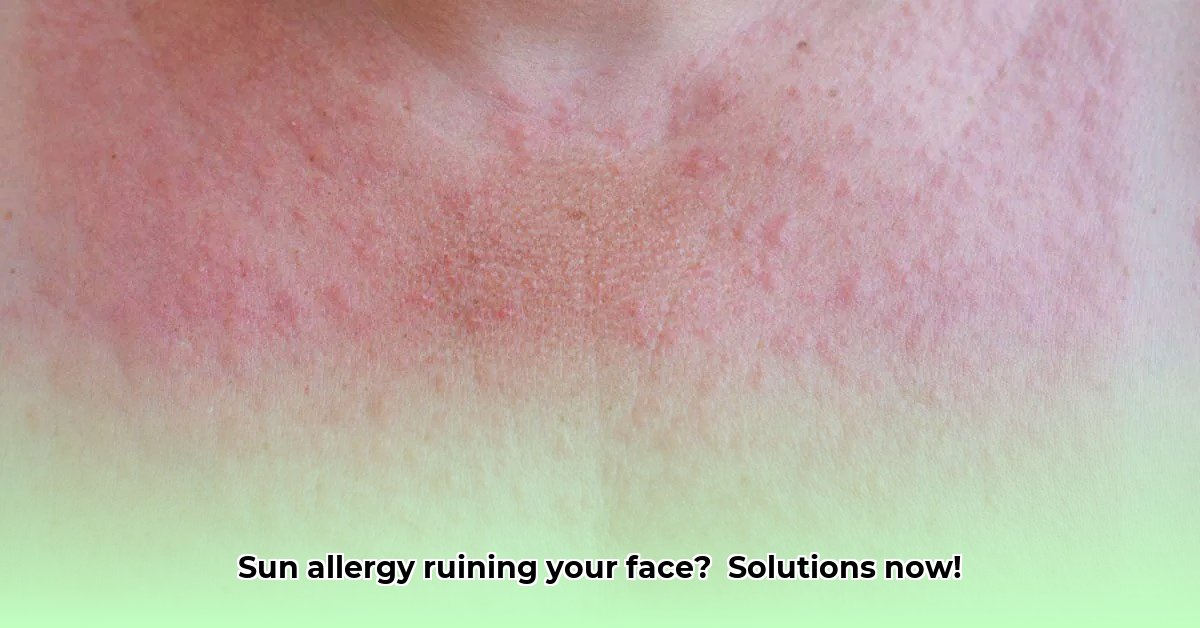
Understanding Zonneallergie Gezicht (PMLE)
Eish, that zonneallergie gesig (sun allergy on the face) can be a real drag, hey? But don't worry, jou, you're not alone. Many South Africans experience this itchy, uncomfortable reaction to sunlight. It's called Polymorphic Light Eruption (PMLE), and it's totally manageable with the right approach. This guide will give you the lowdown on understanding, preventing, and treating PMLE so you can get back to enjoying the sunshine.
PMLE is basically your skin's way of saying, "Too much sun!" It's an allergic reaction to ultraviolet (UV) rays, specifically. A few hours or days after sun exposure, you might notice itchy red bumps or even blisters, mostly on the sun-exposed parts of your face. This often looks quite different from a typical sunburn—more like a rash, and believe us, much itchier. It’s important to distinguish PMLE from sunburn; if you're unsure, chat to your GP or dermatologist.
Preventing Zonneallergie Gezicht Flare-Ups: Your Sun-Smart Strategy
Prevention is key, my friend. Think of it as a gentle training programme for your skin:
Gradual Sun Exposure: Don't go from zero to hero in the sun. Start with short periods and gradually increase the time as your skin adjusts.
Dress for Success (Sun-Smart Clothing): Long sleeves, wide-brimmed hats, and sunglasses are your best friends against harmful UV rays.
Sunscreen is Your Friend (High-SPF Sunscreen): Slather on a broad-spectrum sunscreen with an SPF of 30 or higher. Reapply regularly, especially after sweating or swimming. Find a sunscreen that works well with sensitive skin to avoid extra irritation.
Time Your Sun Exposure Wisely: Avoid the sun's strongest rays, usually between 10 am and 4 pm.
Know Your Triggers: Certain medications, cosmetics, and even some plants can make your allergy worse. Keep a diary to spot any patterns.
Treating a Zonneallergie Gezicht Reaction: Soothing Your Skin
If a reaction happens, don't panic! Here's how to soothe your skin:
Gentle Cleansing: Use a mild, fragrance-free cleanser. Avoid harsh scrubbing!
Cool Compresses: Apply cool compresses (damp, cool cloth) to reduce inflammation and itching. Instant relief!
Over-the-Counter Relief: Anti-itch creams with hydrocortisone can help. Your doctor might also suggest topical corticosteroids, but always follow instructions carefully and be aware of potential side effects. Have you ever considered trying aloe vera gel? It can be very soothing.
When to Seek Professional Help: Knowing When to Call in the Experts
Most PMLE clears up within a week. See a dermatologist if:
- Your symptoms are severe or the rash is widespread.
- Your symptoms worsen or don't improve with home remedies.
- You're unsure if it's PMLE.
Long-Term Management of Zonneallergie Gezicht: Living Sun-Smart
Long-term management involves a consistent approach:
Regular Check-Ups: Annual skin checks with your dermatologist are a good idea.
Identify Your Personal Triggers: Keep a diary to identify potential triggers.
Sun Protection is a Lifestyle: Make sun protection a daily habit, all year round.
How to Safely Use Topical Corticosteroids for Polymorphic Light Eruption (PLE)
Topical corticosteroids are often prescribed for mild to moderate PLE. Here's how to use them safely:
Clean the area: Gently wash and dry the affected area.
Apply a thin layer: Apply a thin layer of cream as directed by your doctor.
Avoid covering: Don't cover the area unless your doctor tells you to.
Avoid eyes: Keep the cream away from your eyes.
Wash your hands: Wash your hands thoroughly after application.
Follow instructions: Use only for the prescribed duration and amount.
Potential Side Effects: These can include skin thinning, stretch marks and discolouration. Severe side effects are rare. Always follow your doctor's instructions.
Conclusion: A Sunnier Outlook
Zonneallergie gesig is manageable. By following these preventative steps and seeking professional help when needed, you can enjoy the outdoors while keeping your skin happy and healthy. Don't let the sun dim your shine!